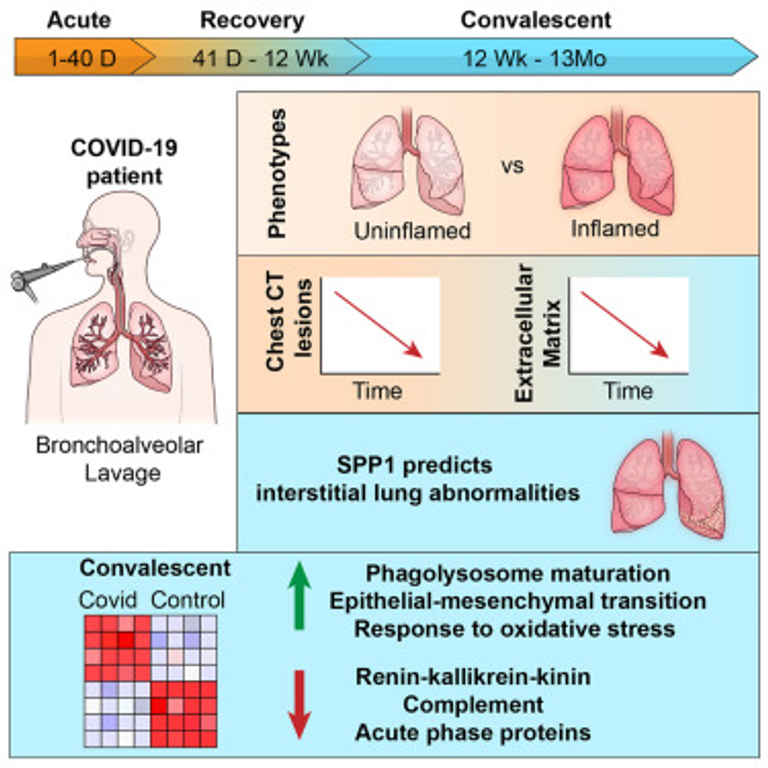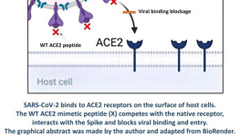In order to assess homeostatic mechanisms in the lung after COVID-19, changes in the protein signature of bronchoalveolar lavage from 45 patients with mild to moderate disease at three phases (acute, recovery, and convalescent) are evaluated over a year. During the acute phase, inflamed and uninflamed phenotypes are characterized by the expression of tissue repair and host defense response molecules. With recovery, inflammatory and fibrogenic mediators decline and clinical symptoms abate. However, at 9 months, quantified radiographic abnormalities resolve in the majority of patients, and yet compared to healthy persons, all showed ongoing activation of cellular repair processes and depression of the renin-kallikrein-kinin, coagulation, and complement systems. This dissociation of prolonged reparative processes from symptom and radiographic resolution suggests that occult ongoing disruption of the lung proteome is underrecognized and may be relevant to recovery from other serious viral pneumonias.
Longitudinal analysis of the lung proteome reveals persistent repair months after mild to moderate COVID-19
Jul 8, 2024|Cell Reports Medicine

Related Content

Kidney Function Decline After COVID-19 Infection
ABSTRACT Importance COVID-19 infection has been associated with acute kidney injury. However, i...

A mimetic peptide of ACE2 protects against SARS-CoV-2 infection and decreases pulmonary inflammation related to COVID-19
ABSTRACT Since human angiotensin-converting enzyme 2 (ACE2) serves as a primary receptor for SAR...